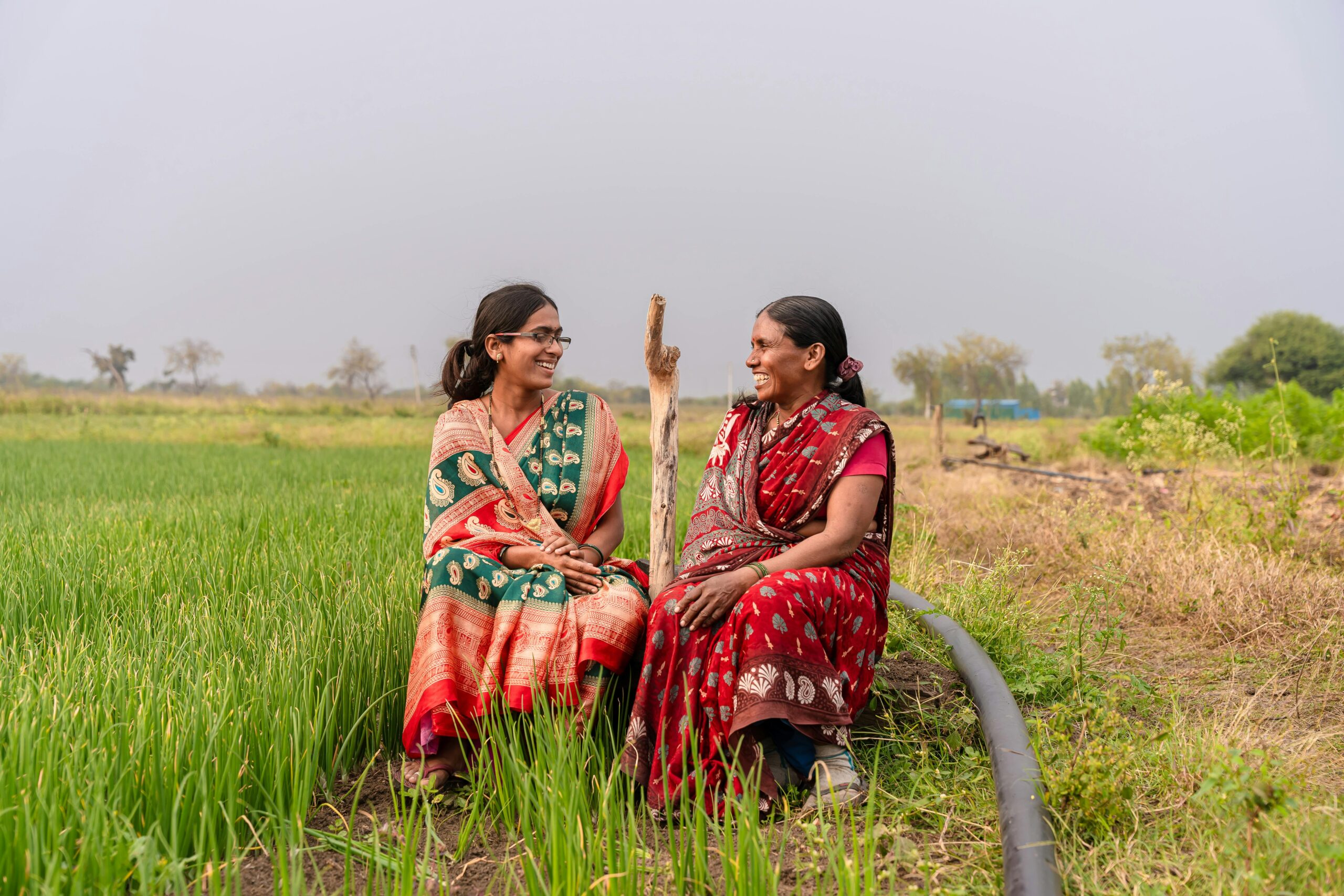Sacred agriculture traditions offer timeless wisdom that bridges spiritual practice with sustainable farming, creating harmony between humanity and the Earth’s natural rhythms. 🌾
The Ancient Roots of Sacred Agriculture
Throughout human history, agriculture has been far more than a mere method of food production. Indigenous cultures worldwide have understood farming as a sacred act—a spiritual dialogue between humans, soil, seeds, and the divine forces that govern growth and abundance. These ancient practices recognized that cultivating land meant entering into a reciprocal relationship with nature, one that required respect, gratitude, and mindful stewardship.
From the terraced rice paddies of Bali’s Subak system to the Native American Three Sisters planting method, traditional agricultural wisdom has always emphasized balance. These systems weren’t designed solely for maximum yield but for long-term sustainability, community well-being, and spiritual fulfillment. The farmers of old understood something modern industrial agriculture has largely forgotten: that the health of the land directly reflects the consciousness of those who tend it.
Today, as climate change and soil degradation threaten global food security, there’s a growing movement to rediscover and integrate these sacred agricultural principles. This isn’t about romanticizing the past but about harvesting wisdom that remains profoundly relevant for creating resilient, regenerative food systems that nourish both body and soul.
Understanding the Spiritual Dimensions of Farming 🙏
Sacred agriculture views farming as a spiritual practice rather than merely an economic activity. This perspective transforms the daily tasks of planting, weeding, and harvesting into acts of meditation and devotion. When farmers approach their work with this consciousness, they cultivate not just crops but also inner qualities like patience, humility, and gratitude.
Many traditional cultures perform rituals before planting seasons, offering prayers or ceremonies to honor the earth and request blessings for the crops. These practices aren’t superstitious relics but powerful ways to foster mindfulness and intentionality. When we approach planting with reverence, we become more attentive to timing, soil conditions, and the subtle signs nature provides.
The spiritual connection to farming also changes our relationship with failure and success. Rather than viewing poor harvests as purely technical problems, sacred agriculture acknowledges the mysterious, uncontrollable elements of growth. This perspective cultivates acceptance and resilience—qualities increasingly valuable in an era of climate unpredictability.
The Practice of Presence in the Field
Working the land mindfully creates opportunities for profound spiritual experiences. The repetitive nature of many farming tasks—weeding, harvesting, pruning—naturally induces meditative states when approached with awareness. This presence allows farmers to notice subtle changes in plant health, soil quality, and ecosystem balance that might otherwise go undetected.
Modern research increasingly validates what traditional farmers have always known: that plants respond to human consciousness and care. Studies on plant biocommunication suggest that intention and attention can influence growth patterns, though the mechanisms remain mysterious. Whether explained by science or left in the realm of spiritual mystery, the practical benefits of farming with mindful presence are undeniable.
Time-Tested Practices for Sustainable Agriculture ♻️
Sacred agricultural traditions offer concrete practices that promote sustainability. These methods have supported communities for centuries without depleting resources or damaging ecosystems. Integrating them into modern farming contexts provides pathways toward regenerative agriculture that heals rather than harms.
Companion Planting and Polyculture Systems
Traditional farming systems rarely relied on monocultures. Instead, they employed sophisticated companion planting strategies that created mutually beneficial plant communities. The Native American Three Sisters method—planting corn, beans, and squash together—exemplifies this wisdom. The corn provides structure for beans to climb, beans fix nitrogen in the soil, and squash leaves shade the ground, retaining moisture and suppressing weeds.
These polyculture approaches increase biodiversity, improve soil health, reduce pest problems, and create more resilient systems. They also produce more varied nutrition and reduce risk by not depending on a single crop. Modern permaculture has rediscovered and expanded these principles, creating food forests and guild plantings based on traditional wisdom.
Honoring Seasonal Cycles and Lunar Rhythms
Many sacred agricultural traditions work closely with natural cycles—not just the obvious progression of seasons but also lunar phases, planetary movements, and subtle energy patterns. Biodynamic farming, developed by Rudolf Steiner, systematizes these observations into a comprehensive approach that many farmers find remarkably effective.
Planting by the moon phases isn’t mysticism—it’s observational wisdom. The moon’s gravitational pull affects moisture in soil just as it influences ocean tides. Many traditional farmers plant above-ground crops during the waxing moon and root crops during the waning moon, aligning their work with these natural forces rather than working against them.
Seed Saving as Sacred Trust
In sacred agriculture, seeds represent continuity, heritage, and hope. Traditional farmers understood themselves as temporary stewards of seed lines that stretched back generations and would continue long after they were gone. This perspective fostered careful seed selection, saving, and sharing—practices that preserved genetic diversity and adapted crops to local conditions.
The modern loss of seed diversity—with industrial agriculture depending on ever-narrower genetic stock—represents not just an agricultural risk but a spiritual crisis. Reclaiming seed-saving practices reconnects farmers with this ancient responsibility and builds resilience against corporate control of food systems.
The Soil as Living Sacred Space 🌱
Perhaps no aspect of sacred agriculture is more crucial than the understanding of soil as living, sacred substance rather than inert growing medium. Traditional farmers spoke to the soil, made offerings to it, and studied its qualities with the attention scholars might give to sacred texts. This reverence wasn’t sentimental—it reflected deep understanding of soil’s complexity and vitality.
Modern soil science increasingly validates this perspective. We now know that healthy soil contains billions of microorganisms—bacteria, fungi, protozoa—forming vast underground networks that facilitate nutrient cycling, water retention, and plant communication. This soil food web is astonishingly complex, and scientists have barely begun mapping its interactions.
Industrial agriculture’s focus on chemical inputs has devastated these soil ecosystems. In contrast, sacred agricultural practices—composting, cover cropping, minimal tillage, and organic amendments—nurture soil life. These methods recognize that feeding the soil feeds the plants, creating nutritionally dense foods while building long-term fertility rather than depleting it.
Building Soil Through Regenerative Practices
Regenerative agriculture combines traditional wisdom with modern understanding to actively improve soil health. Key practices include:
- Keeping soil covered with living plants or mulch to protect microbial communities
- Integrating animals into cropping systems for natural fertilization and soil disturbance
- Maximizing plant diversity to feed diverse soil organisms
- Minimizing soil disturbance to preserve fungal networks and soil structure
- Maintaining living roots in soil year-round to sustain the soil food web
These practices don’t just maintain soil—they actively regenerate it, increasing organic matter, improving water infiltration, and sequestering atmospheric carbon. Farms following these principles often see dramatic improvements in just a few years, demonstrating that healing degraded land is possible when we work with natural processes rather than against them.
Water Wisdom in Sacred Agriculture 💧
Traditional cultures universally recognized water as sacred—the source of all life. This reverence translated into sophisticated water management practices designed to conserve, honor, and share this precious resource. From the qanat systems of ancient Persia to the acequia irrigation networks of the American Southwest, sacred agriculture developed ingenious methods for working with water sustainably.
These systems emphasized slow, deep infiltration rather than surface runoff, using swales, berms, and terracing to capture and store rainfall. They recognized that water management begins with soil health—that living soil with high organic matter acts like a sponge, holding moisture through dry periods. This understanding contrasts sharply with industrial approaches that often treat water as an input to be applied mechanically rather than a gift to be stewarded wisely.
Climate change is making water wisdom increasingly critical. Regions facing more intense droughts and floods need strategies that increase landscape resilience. Traditional practices like rainwater harvesting, greywater recycling, and dryland farming techniques offer proven solutions that honor water’s sacred nature while meeting practical needs.
Community and Shared Abundance 🤝
Sacred agriculture was never practiced in isolation. Traditional farming communities shared labor, knowledge, seeds, and harvests, understanding that collective wellbeing depended on mutual support. Barn raisings, harvest festivals, and communal work days weren’t just practical necessities—they were celebrations of interconnection that strengthened social bonds and distributed both work and abundance.
This communal dimension offers crucial lessons for contemporary food systems dominated by isolation and competition. Community Supported Agriculture (CSA) programs, food cooperatives, and community gardens represent modern expressions of this ancient wisdom, reconnecting people with food sources and with each other.
The spiritual dimension of shared abundance goes deeper than economics. Many traditions taught that hoarding resources or failing to share invited misfortune, while generosity created prosperity. This wisdom recognized that true wealth flows through communities when resources circulate freely, creating resilience that individual accumulation never can.
Integrating Sacred Agriculture Into Modern Life 🌿
You don’t need to own farmland to embrace sacred agricultural principles. These practices can be adapted to any scale—from windowsill herb gardens to urban community plots to large-scale farms. The key is approaching growing food with intention, reverence, and ecological awareness.
Starting Small With Container Gardening
Even apartment dwellers can practice sacred agriculture through container gardening. Choose a few herbs or vegetables, research their needs, and tend them with attention and care. Notice how the daily practice of watering and observing plants creates rhythm and connection. Offer gratitude when harvesting, even if it’s just a handful of basil leaves for dinner.
This small-scale practice teaches patience and attunement to living cycles. You’ll learn to read subtle signs of plant health, understand how light and water interact, and experience the deep satisfaction of eating food you’ve grown with your own hands.
Creating Sacred Space for Growing
Designating garden space as sacred—through simple rituals, mindful design, or intentional plantings—transforms growing food into spiritual practice. This might mean creating a small altar in your garden, offering prayers before planting, or simply pausing before entering to set an intention for presence and gratitude.
Some practitioners incorporate elements from specific traditions—creating mandala gardens inspired by Buddhist practice, planting medicine wheels reflecting Indigenous teachings, or following biodynamic preparations. Others develop personal practices that resonate with their own spiritual paths. What matters is approaching the work with consciousness and care.
Connecting With Local Food Systems
Supporting farmers who practice sacred agricultural principles strengthens these approaches. Seek out farmers’ markets, CSA programs, and regenerative farms in your area. Building relationships with people who grow your food creates accountability and connection that supermarket shopping never provides.
Many farms welcome volunteers or offer internship programs. Spending time working the land—even occasionally—provides invaluable direct experience of agricultural realities and deepens appreciation for the work of feeding communities sustainably.
The Future Grows From Ancient Roots 🌳
As industrial agriculture’s limitations become increasingly apparent—depleted soils, contaminated water, loss of biodiversity, and contribution to climate change—sacred agricultural wisdom offers not nostalgic retreat but practical pathways forward. The future of farming will necessarily integrate traditional knowledge with appropriate modern technology, creating regenerative systems that can feed growing populations while healing ecosystems.
This integration is already happening. Young farmers worldwide are rediscovering traditional practices, adapting them to contemporary contexts, and demonstrating their viability. Research institutions increasingly study these methods, validating their effectiveness and exploring underlying mechanisms. Policy makers in some regions actively support transitions toward more sustainable, spiritually grounded agricultural systems.
The shift requires more than technique—it demands a fundamental reorientation toward recognizing the sacred in everyday acts of growing food. This doesn’t mean everyone must become farmers, but it does mean cultivating awareness of where food comes from and supporting systems aligned with regenerative principles.
Cultivating Gratitude and Right Relationship 🙏
Perhaps the most essential teaching of sacred agriculture is gratitude—recognizing food as gift rather than commodity, acknowledging the miraculous chain of soil, sun, water, seed, and human effort that brings nourishment to our tables. This recognition naturally leads to more respectful, sustainable practices.
Traditional cultures developed elaborate rituals of thanksgiving around food—prayers before meals, harvest festivals, offerings to the earth. These weren’t empty formalities but practices that maintained awareness of dependence on natural systems and fostered reciprocity rather than exploitation.
In modern life, we can revive these practices in forms that feel authentic. Simple mealtime gratitude, learning about where food comes from, reducing waste, composting, growing even small amounts of food—all these practices cultivate the consciousness of right relationship with the living world that sustains us.

Sowing Seeds of Transformation ✨
The wisdom of sacred agriculture offers profound gifts for both planetary health and personal spiritual development. By recognizing farming as sacred work, we transform our relationship with food, land, and each other. These ancient practices provide tested pathways toward sustainability while offering meaning and connection increasingly absent from modern life.
Whether you farm acres or tend a few pots on a balcony, approaching plant cultivation with reverence, ecological awareness, and gratitude participates in this ancient tradition. Each seed planted with intention, each harvest received with thanksgiving, each choice to support regenerative agriculture strengthens the collective movement toward food systems that honor both Earth and spirit.
The challenges facing global food security and ecological stability are immense, but solutions exist within the accumulated wisdom of cultures that sustained themselves for millennia through sacred relationship with land. By harvesting this wisdom and adapting it to contemporary contexts, we can create agricultural systems that nourish bodies, regenerate ecosystems, and feed souls—growing not just food but the consciousness needed for humanity to thrive in balance with the living Earth.
The work of transformation begins with a single seed, planted with awareness and care. From that small beginning, abundance grows—not just material harvest but the deeper fruits of connection, meaning, and hope for a sustainable future rooted in the sacred. 🌾
Toni Santos is an eco-spirituality researcher and planetary healing writer exploring how earth-based rituals, nature-centred philosophy and sacred ecology reconnect humanity with the living planet. Through his work on environment, consciousness and ritual, Toni examines how our relationship with Earth influences our awakening and actions. Passionate about land-wisdom, ritual practice and ecological integration, Toni focuses on how spiritual life can emerge from ecological awareness and how healing flows from land, water and community. His work highlights the union of ecology, mind and spirit — guiding readers toward a more grounded, relational, and sacred life. Blending ritual studies, environmental philosophy and ecological design, Toni writes about the human-earth story — helping readers understand how living systems, community and meaning intertwine in planetary healing. His work is a tribute to: The sacred connection between humanity and Earth’s living systems The power of ritual to rekindle land-memory and collective renewal The vision of ecology as sacred, relational and transformational Whether you are a ritual practitioner, ecological thinker or planet-healer, Toni Santos invites you to explore the path of planetary awakening — one ritual, one ecosystem, one transformation at a time.




